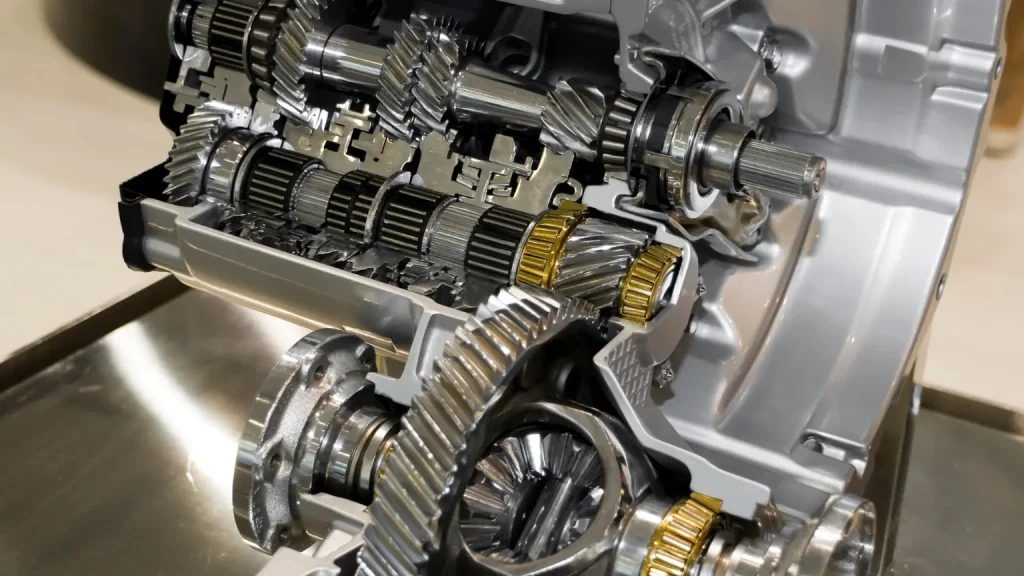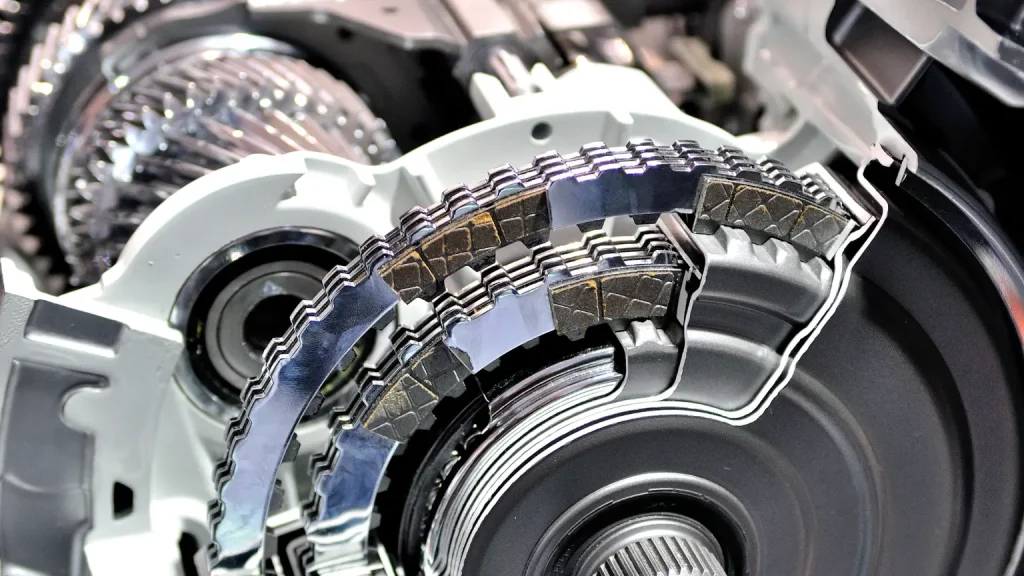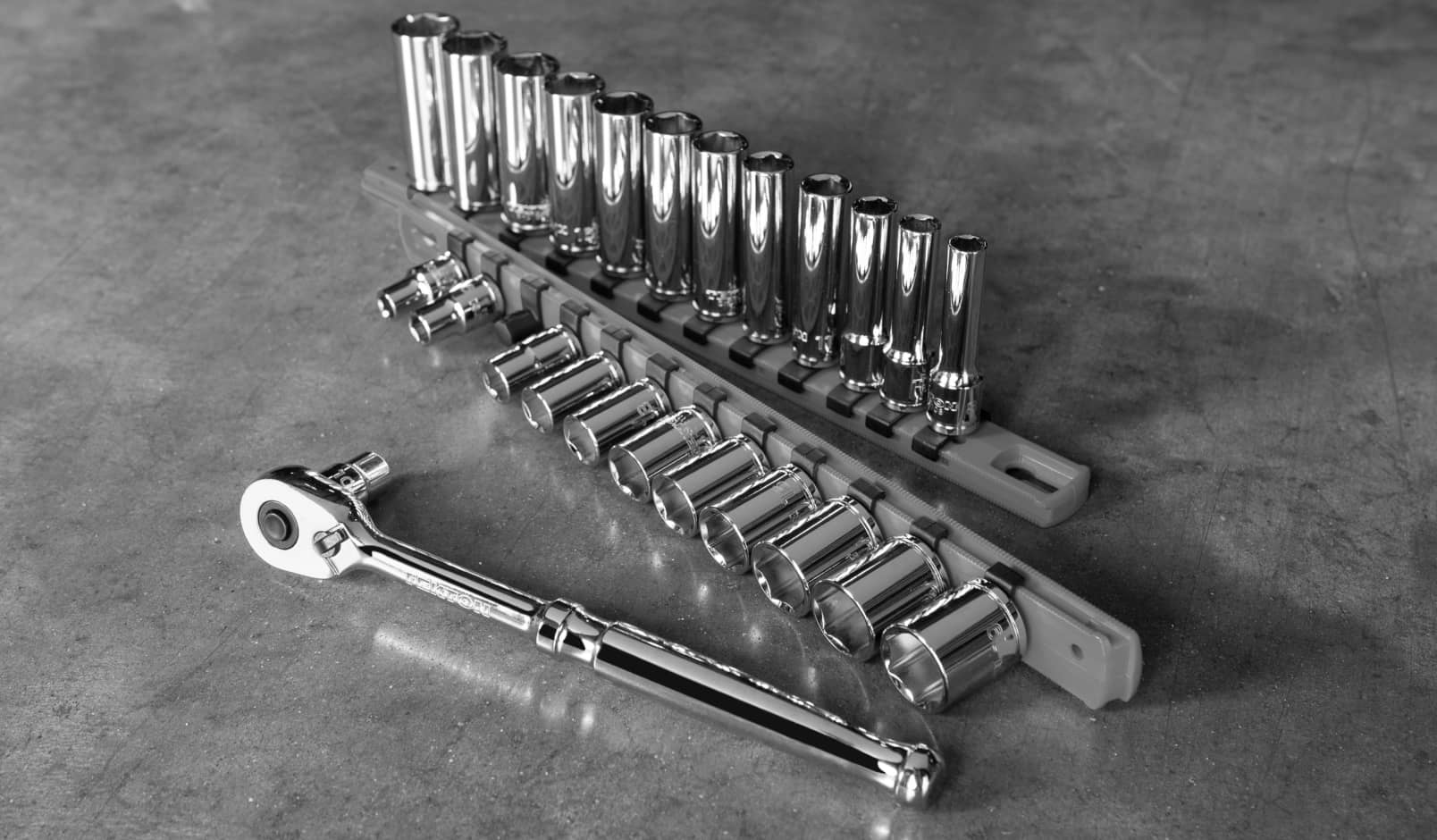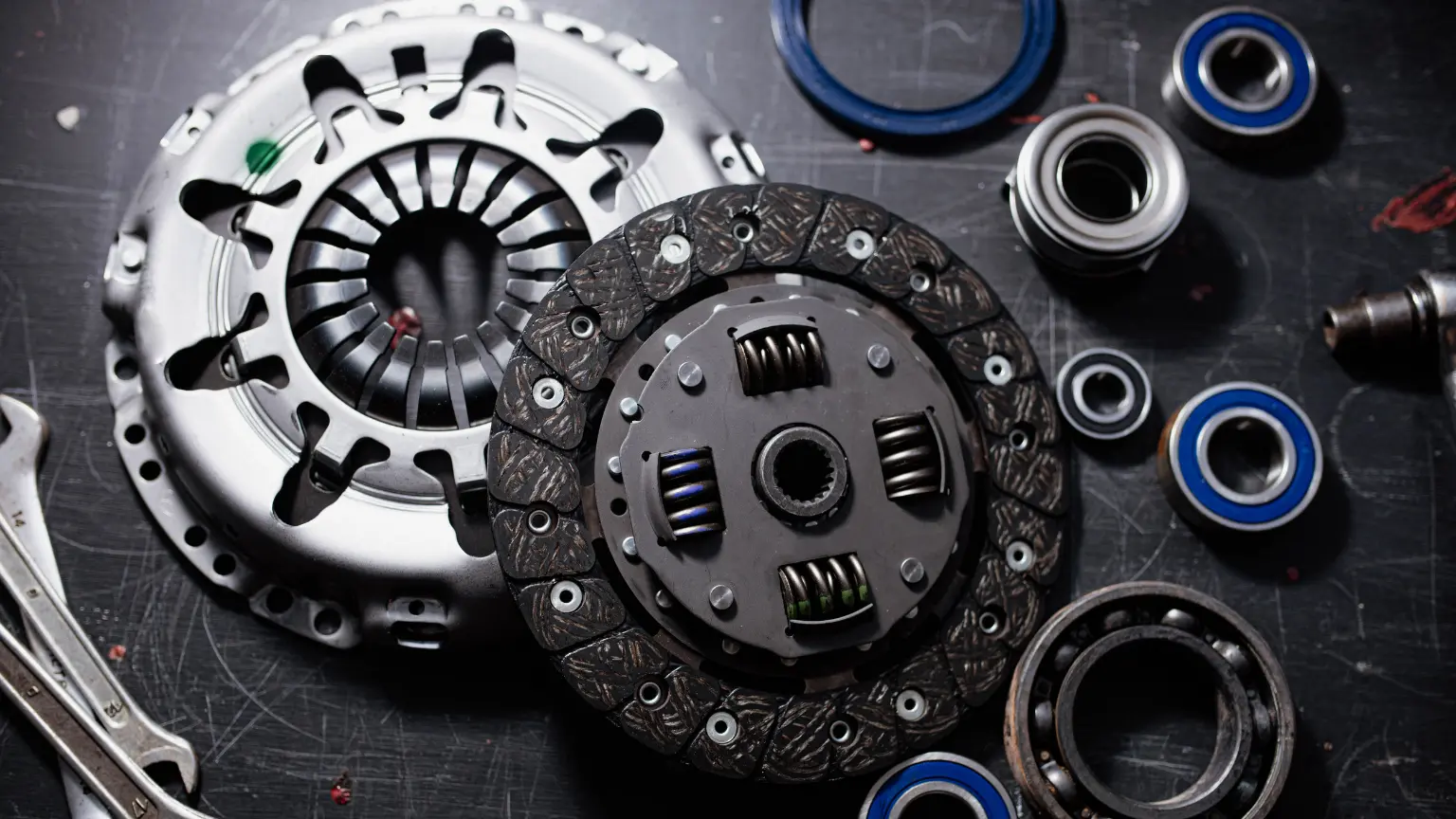Comparing Adaptive and Dual-Clutch Transmissions: Key Differences
From manuals to cutting-edge CVTs and dual-clutch systems, discover how modern transmissions adapt in real time to boost fuel efficiency, performance and ride smoothness.

Transmissions are a fundamental component of all vehicles, serving as the bridge between the engine and the wheels, enabling the car to move efficiently at varying speeds. Two advanced types of transmissions are adaptive vs. dual-clutch transmissions, each offering unique benefits depending on the driving conditions and vehicle design. This blog post examines various car transmission types, highlighting the evolution from manual and automatic transmissions to more advanced systems that improve driving dynamics and fuel efficiency.
Comparison to Manual and Automatic Transmissions
When comparing dual-clutch transmissions (DCTs) to both manual and traditional automatic transmissions, several key similarities and differences in operation and user experience emerge. Like manual transmissions, DCTs use a clutch mechanism to engage and disengage gears, but they automate the process using electronically controlled dual clutches. One for odd-numbered gears and another for even-numbered gears. This allows for rapid and seamless gear changes without the need for a clutch pedal or manual gear lever, blending the direct, connected feel of a manual with the convenience of an automatic. In contrast, traditional automatics rely on a torque converter and planetary gearsets, resulting in generally smoother but sometimes slower gear shifts.

etrack scenarios. The quick gear changes allow for better control and faster acceleration, making these transmissions a favorite among car enthusiasts who value speed and precision. Their efficiency and performance also make them suitable for anyone looking to enhance their everyday driving experience with a bit of excitement.
Dual-Clutch Mechanics and Efficiency
Its efficiency lies in its ability to operate with minimal hydraulic resistance, thanks to the lack of a torque converter and the direct engagement of gears. This aspect contributes to reduced energy loss and improves the vehicle’s responsiveness. Maintaining optimal engine speed by switching gears at precise moments allows these transmissions to utilize the engine’s power more effectively, improving fuel efficiency and dynamic performance.
Advantages and Limitations of Adaptive Transmissions
Maintenance Requirements
Preserving these sophisticated systems requires attention to specific components and practices to ensure they continue performing optimally. Below is a breakdown of the essential maintenance tasks necessary for keeping adaptive transmissions in peak condition:
- Regular Software Updates: Over time, manufacturers release software updates to enhance these algorithms, improving responsiveness, fuel efficiency, and compatibility with evolving vehicle technologies. These updates may also address known bugs or optimize the system for new driving scenarios. To ensure your transmission benefits from the latest advancements, schedule software updates during routine service appointments. Neglecting these updates can lead to reduced performance or even compatibility issues with other vehicle systems.
- Transmission Fluid Changes: Transmission fluid plays a vital role in lubricating and cooling the components of an adaptive transmission. However, the unique demands of these systems often require specialized fluids designed for adaptive transmissions. Following the manufacturer's guidelines for the fluid type and replacement intervals is critical to maintaining a smooth operation. Factors such as driving habits, load conditions, and climate can influence the frequency of fluid changes. Dirty or degraded fluid can compromise the system’s ability to function correctly, leading to overheating or increased wear.
- Sensor Checks and Replacements: Adaptive transmissions depend heavily on input from sensors that monitor speed, temperature, throttle position, and other variables. These sensors provide real-time data that the system uses to determine the most efficient gear ratios. Over time, sensors can become faulty due to dirt, wear, or electrical issues, leading to inaccurate readings. Regular diagnostic scans help identify and address sensor problems before they affect transmission performance. Replacing damaged or failing sensors promptly ensures the system continues to operate accurately and efficiently. Sensor maintenance is particularly important for vehicles used in challenging environments where dirt and debris can compromise sensor functionality.
- Clutch Wear Inspection: The clutches endure less wear than those in manual systems, but they are not immune to degradation over time. Driving style, vehicle load, and operating conditions can accelerate clutch wear. Regular inspections allow mechanics to assess the condition of the clutches and address any issues before they escalate into more significant problems. Signs of clutch wear, such as delayed shifting or slipping, should be addressed immediately to prevent damage to other transmission components.
- Component Adjustments for Optimal Performance: Adaptive transmissions include belts, pulleys, and actuators requiring periodic adjustments to maintain efficiency. These parts are subject to stress and wear, especially in vehicles exposed to extensive use or harsh driving conditions. Regular inspections and adjustments help maintain the alignment and tension of these components, ensuring the system operates smoothly. Failure to address misalignments or worn parts can lead to decreased performance or even mechanical failure.
Proper maintenance of adaptive transmissions ensures their longevity and enhances your vehicle's overall performance. By staying proactive with software updates, fluid changes, sensor diagnostics, clutch inspections, and component adjustments, you can enjoy the full benefits of this advanced technology. A well-maintained adaptive transmission provides smoother shifts, better fuel efficiency, and a more responsive driving experience.

Longevity and Repair Considerations
While these are designed for durability and long-term use, their repair can be more complex and costly compared to more traditional systems. The high level of integration between mechanical components and electronic controls requires specialized knowledge and tools for diagnosis and repair, which can increase the overall maintenance cost and might necessitate visits to specialized car transmission shops.
Advantages and Limitations of Dual-Clutch Transmissions
Reduced Shift Times and Power Loss
The quicker shifts also mean less power loss between transitions, allowing more of the engine's power to be directly translated to motion. Such efficiency is a key factor in the enhanced acceleration and dynamic response that drivers appreciate in dual-clutch-equipped vehicles.
Limitations in Urban or Low-Speed Driving
Despite their strengths in performance settings, dual-clutch transmissions can exhibit limitations in urban or low-speed driving conditions. They may feel jerky or hesitant during slow traffic maneuvers or when starting from a stop. This is often due to the dual-clutch system's design, which excels in high-speed shifts but can struggle to replicate the smoothness of traditional automatics at lower speeds.
Costs Associated with Repairs and Service
Maintaining a dual-clutch transmission can be costly, especially when considering the advanced technology and precision mechanics involved. Here's an overview of the potential costs:
- Parts Replacement: The specialized components of dual-clutch systems, such as clutch plates, electronic modules, and actuators, are typically more expensive than those in conventional transmissions. These parts are designed with precision to ensure smooth and efficient operation, but their advanced engineering comes at a premium. For example, replacing a clutch pack can cost significantly more due to the high-performance materials used and the need for exact compatibility. Sourcing these parts might require longer lead times, particularly for less common vehicle models. Understanding these costs can help vehicle owners anticipate expenses and weigh the benefits of repair versus replacement when issues arise.
- Labor Costs: Mechanics must often undergo additional training to handle these systems effectively, which can increase hourly labor rates. Tasks such as replacing components, calibrating the system, or performing detailed inspections require more time and precision compared to standard transmissions. The intricate design of dual-clutch systems also means that even minor repairs can take longer, further driving up labor costs. Investing in skilled labor is crucial for vehicle owners to ensure repairs are performed correctly and prevent additional issues.
- Frequent Maintenance: This includes tasks like fluid changes, which must be performed with specialized transmission fluid designed specifically for dual-clutch systems. Also, periodic software updates and mechanical adjustments may be necessary to optimize performance. While these auto transmission services are less costly individually, their frequency can lead to higher cumulative expenses over time. Neglecting routine maintenance can result in major repairs, further emphasizing the importance of staying on schedule.
- Diagnostic Services: Identifying the root cause of an issue often requires advanced diagnostic tools and expertise, which can increase service costs. For example, resolving a shifting problem might involve scanning for error codes, testing electronic modules, and inspecting mechanical components, all of which add to the overall expense. These auto gearbox services can be costly upfront, but they are essential for accurately pinpointing issues and avoiding unnecessary repairs. Regular diagnostics also help identify potential problems early, reducing the likelihood of more significant expenses.
Vehicle owners can mitigate these expenses by investing in regular maintenance, seeking skilled technicians, and staying informed about their system’s specific needs. Proactively addressing potential issues, owners can extend the lifespan of their dual-clutch transmission and maximize its benefits, making it a worthwhile investment in the long run.
Common Misconceptions About Car Performance and Transmission Types
Debunking Myths About Durability
One common misconception is that adaptive transmissions are less durable than traditional automatics due to their complex nature. However, advancements in technology have significantly improved their reliability and longevity. Similarly, some believe that dual-clutch transmissions are unsuitable for long-term use in everyday vehicles because they are often associated with high-performance cars. In reality, dual-clutch systems are designed to handle high stress and can be just as durable as other types when adequately maintained.
Complexity and Repair
While these technologies incorporate advanced car transmission mechanics and electronics, their design is intended to maximize efficiency and performance. As emphasized previously, with regular maintenance, both types of transmissions can be as reliable as traditional models. However, repairs might indeed require specialized knowledge, potentially increasing service costs.
Differentiating Marketing Claims
Manufacturers often promote dual-clutch vs. adaptive transmissions with bold claims about their revolutionary benefits and superior performance. Consumers need to verify these claims through independent reviews and real-world user feedback. Understanding what these technologies can realistically offer will help you make a more informed purchasing decision.

Understanding What “Advanced Technology” Means
The term “advanced technology” can be misleading as it implies a one-size-fits-all solution for all drivers' needs. In reality, the benefits of adaptive or dual-clutch technologies vary significantly depending on each user's specific requirements and driving conditions. Potential buyers should consider how the characteristics of each transmission align with their personal and practical needs before deciding based on the appeal of technological advancement alone.
The best transmission choice is one that aligns with your driving habits, meets your performance expectations, and fits within your budget while offering the reliability and efficiency you need. By dispelling common myths and understanding the unique advantages and limitations of each transmission type, drivers can make well-informed decisions that enhance their driving experience and satisfaction with their vehicle. For expert transmission repair you can trust, schedule your service today with Trans Medic Transmissions\, your local specialists in keeping vehicles running at peak performance.
Follow a maintenance program
Ante gravida id aenean quis egestas risus nam amet nullam leo diam diam aliquam eu eu malesuada arcu rhoncus suspendisse nulla mattis ut amet sagittis in justo egestas.

search for a trusted mechanic
Lorem ipsum dolor sit amet, consectetur adipiscing elit lobortis arcu enim urna adipiscing praesent velit viverra sit semper lorem eu cursus vel hendrerit elementum morbi curabitur etiam nibh justo, lorem aliquet donec sed sit mi dignissim at ante massa mattis.
- Neque sodales ut etiam sit amet nisl purus non tellus orci ac auctor
- Adipiscing elit ut aliquam purus sit amet viverra suspendisse potent
- Mauris commodo quis imperdiet massa tincidunt nunc pulvinar
- Excepteur sint occaecat cupidatat non proident sunt in culpa qui officia
Check the air pressure in your tires
Vitae congue eu consequat ac felis placerat vestibulum lectus mauris ultrices cursus sit amet dictum sit amet justo donec enim diam porttitor lacus luctus accumsan tortor posuere praesent tristique magna sit amet purus gravida quis blandit turpis.
Review your suspension frequently
At risus viverra adipiscing at in tellus integer feugiat nisl pretium fusce id velit ut tortor sagittis orci a scelerisque purus semper eget at lectus urna duis convallis. porta nibh venenatis cras sed felis eget neque laoreet suspendisse interdum consectetur libero id faucibus nisl donec pretium vulputate sapien nec sagittis aliquam nunc lobortis mattis aliquam faucibus purus in.
- Neque sodales ut etiam sit amet nisl purus non tellus orci ac auctor
- Adipiscing elit ut aliquam purus sit amet viverra suspendisse potent
- Mauris commodo quis imperdiet massa tincidunt nunc pulvinar
- Excepteur sint occaecat cupidatat non proident sunt in culpa qui officia
Service your vehicle as regularly as posible
At risus viverra adipiscing at in tellus integer feugiat nisl pretium fusce id velit ut tortor sagittis orci a scelerisque purus semper eget at lectus urna duis convallis. porta nibh venenatis cras sed felis eget neque laoreet suspendisse interdum consectetur libero id faucibus nisl donec pretium vulputate sapien nec sagittis aliquam nunc lobortis mattis aliquam faucibus purus in.
“Nisi quis eleifend quam adipiscing vitae aliquet bibendum enim facilisis gravida neque velit euismod in pellentesque”
Conclusion
Eget lorem dolor sed viverra ipsum nunc aliquet bibendum felis donec et odio pellentesque diam volutpat commodo sed egestas aliquam sem fringilla ut morbi tincidunt augue interdum velit euismod eu tincidunt tortor aliquam nulla facilisi aenean sed adipiscing diam donec adipiscing ut lectus arcu bibendum at varius vel pharetra nibh venenatis cras sed felis eget.


